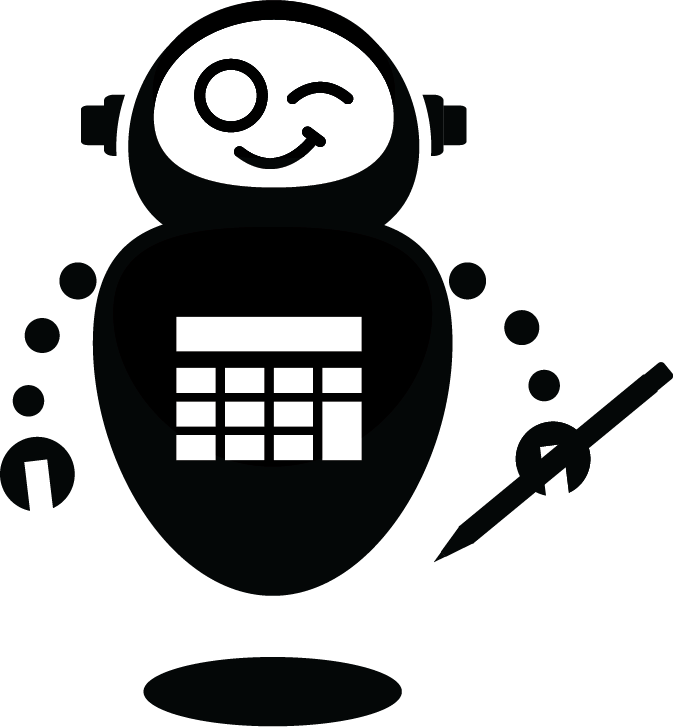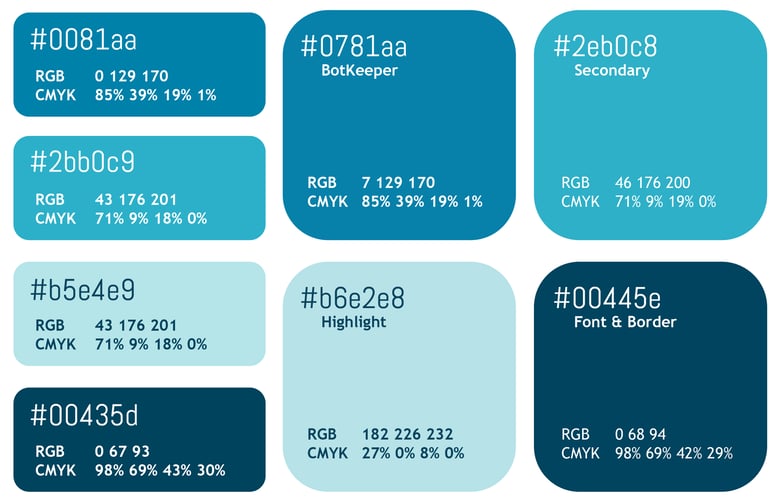Style Guide
This is the place to find all Botkeeper brand assets, written, and visual guidance. We built this to make it as easy as possible to use our brand while staying within our guidelines.
Tagline:
"Better than humans, better than machines. Automated bookkeeping with a human touch."
BOILERPLATE
Botkeeper is a Human-Assisted Artificial Intelligence (AI) platform that automates bookkeeping, purpose-built for Accounting Firms. Combining artificial intelligence & machine learning technology, with high-quality skilled accountants, we deliver a full-suite bookkeeping & pre-accounting solution to Accounting firms. Clients receive 24/7 accounting and support, as well as incredible insight into their financials with interactive dashboards and unlimited reporting. Botkeeper’s Accounting Partners are able to grow their book of business and provide high-quality services to their clients, increasing their ability to take on new clients while getting spotless financials at tax time — and reducing overhead. Botkeeper is the only solution of its kind, acting as a force multiplier for accounting professionals and their clients.
Logo Kit and Bots
Download the Logo Kit Here!
What's included? All of our logo, bot, and bothead variations, in multiple file formats.

Gray Bothead

Standard Bothead

Black Bothead

White Bothead
Proper Logo Use
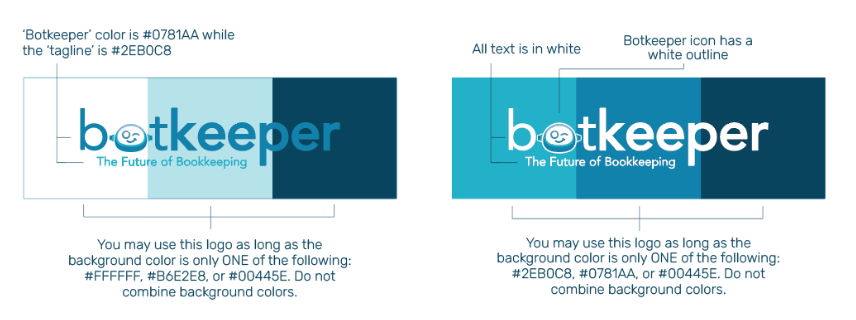
Improper Logo Use
WEBSITE TYPOGRAPHY
Fonts, sizes, colors, and all that good stuff. A great resource for keeping your type sizing looking tight is to reference Type Scale. The type family for Botkeeper's website headings is Bebas Neue, and supporting copy is Roboto.
H1 HEADING
H2 HEADING
H3 HEADING
H4 Heading
H5 HEADING
H6 HEADING
Paragrah of text lorem ipsum dolor amet cornhole mixtape raw denim, vexillologist wayfarers four loko aesthetic pinterest offal trust fund viral cred meggings photo booth kinfolk. Marfa iceland godard shoreditch kogi banjo viral listicle. Knausgaard tbh vinyl tumblr distillery godard literally direct trade. VHS next level raclette kinfolk shabby chic street art bushwick kickstarter drinking vinegar pinterest craft beer tote bag hella chillwave. Bitters paleo whatever iceland. Tofu messenger bag vaporware, godard quinoa letterpress art party.
FULL TONE PALETTE
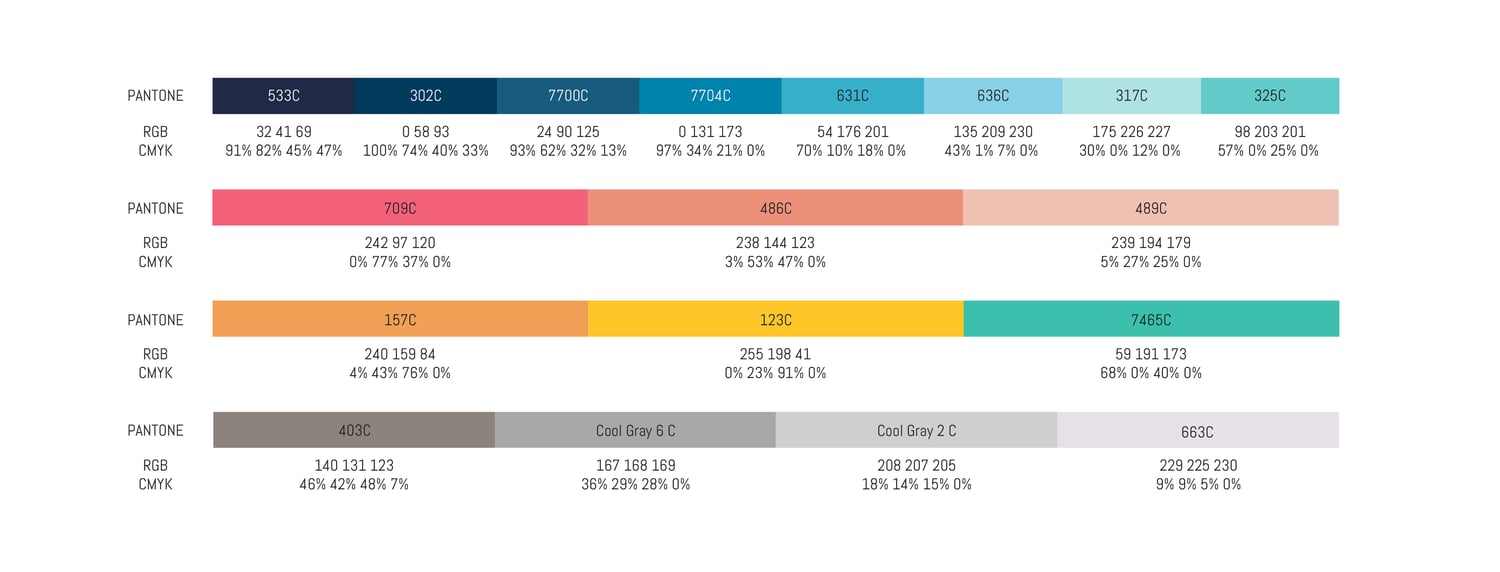
ANNOUNCING YOUR BOTKEEPER PARTNERSHIP
-
ACCOUNTING PARTNERS, When Botkeeper Branding is Custom-branded
To help ensure your day-to-day bookkeeping needs continue to be addressed and to enable our Accounting Firm to focus on providing higher-level advisory services for you, we have implemented an automated bookkeeping solution! Our new bookkeeping solution will position our firm to better service your business, by augmenting the manual and tedious bookkeeping work that we currently perform. It also means you’ll benefit from the power of artificial intelligence and machine learning, which is more accurate and efficient than humans. Additionally, you'll have access to a powerful new client hub, where we can store documents, communicate, and track tasks. You will not see any interruption in your bookkeeping, and we’re happy to answer any questions you may have about this transition.
-
ACCOUNTING PARTNERS, When Botkeeper Branding is Visible to Clients
We have joined the Botkeeper Partner Program Ecosystem! Botkeeper, a leading bookkeeping software platform, works hand-in-hand with Accounting Partners to help grow their businesses by extending the value of their services and augmenting the manual and tedious bookkeeping work. Botkeeper Partners are independent Accounting Firms who have launched the Botkeeper program within their businesses to automate the bookkeeping. This will position our firm to better service your business by augmenting the manual and tedious bookkeeping work that we currently perform. It also means you’ll benefit from the power of artificial intelligence and machine learning, which is more accurate and efficient than humans. You will not see any interruption in your bookkeeping, and we’re happy to answer any questions you may have about this transition.
-
STRATEGIC PARTNERS
We have joined the Botkeeper Partner Ecosystem! Botkeeper, a leading bookkeeping platform, works hand-in-hand with client-centric software companies, service providers, and financial organizations like us that want to offer their clients the best-in-class bookkeeping and accounting solutions. This partnership allows us to offer an automated bookkeeping solution to help our client base achieve their financial goals. It also means our clients can benefit from the power of artificial intelligence and machine learning, which is more accurate and efficient than humans!
Botkeeper's Approach to 'Voice' and 'Tone'
-
Overview
Botkeeper is the future of bookkeeping. It’s a bold statement to make, and one that does a good job of summing up our tone of voice. It also happens to be our official slogan.
Botkeeper doesn’t shy from making a statement. While not everything has to be a mic-drop moment, you should strive to make your words count toward making your point. Be provocative!
With that in mind, the Botkeeper style can be summarized as casual, authoritative, friendly, and irreverent.
-
Writing with emotion
Think about some of the driest, least-interesting things you’ve read. They are likely instructional or academic: the directions for a board game or putting together an office chair; textbooks and the like.
One reason these things tend to lack interest is that they’re designed to communicate information succinctly, not to convince or elicit action.
Client-facing sales and marketing copy, however, should never be dry or unapproachable. Here are some ways you can help add emotional appeal to your writing:
Consider the readers’ problems. How might they be affecting their work? How is what you’re offering/discussing part of the solution?
Don’t pressure targets, but communicate urgency. Terms like “act now!” are perfectly fine, but they will be more effective if you explain why they should act now. Is there a looming deadline? A consequence for failing to act quickly? Tell them about it.
Sympathize with your audience. If they are suffering in some way, acknowledge that. Be human.
Be light and fun. But use humor appropriately. Not everyone finds the same things funny, and the potential for offending someone is ever-present. If you aren’t sure if your humor is crossing a line, ask others for input.
Be descriptive. By setting a scene for your audience, you draw them into the message and involve them emotionally.
Name the emotions. Your audience is subject to the full range of human emotions, and will recognize themselves best when you call out their emotional state. Are they frustrated? Anxious? Afraid of making the wrong choice? Overjoyed? Call them out.
Here is an example paragraph from a fictional email that lacks emotion:
Dear [name]:
Botkeeper can automate the categorization of transactions using artificial intelligence. After setting up the clients’ accounts to transfer data directly into the platform, Botkeeper will review and automate categorization for each entry, while marking those transactions it can’t categorize confidently for further review from a team member.
And here is that same section, written more fully into Botkeeper tone:
Hi [name]!
One of the most troublesome and painful parts of bookkeeping is data entry. It can take forever, and is prone to error. But Botkeeper can help! Easily connect your clients’ accounts to the platform and marvel as it automatically categorizes transactions using artificial intelligence, marking only those that need a human’s input.
Note the attention paid to identifying with the audience’s problems and how we can help address them. This approach is the best way to talk about a product feature. It sets a much more approachable tone, speaking more conversationally. More importantly, notice it was able to accomplish this in about the same number of words—writing with emotion needn’t be lengthy.
-
Casual, not slack
Writing casually doesn’t mean the rules go out the window. Grammar, punctuation, and syntax all matter.
It’s also important to be careful not to be too familiar; you can cross the line in copy by seeming too blasé.
Here are some tips to keep your writing from straying into questionable territory:
Keep it positive.
No talking down events, people or products. Instead, keep focus on why what we’re offering is better. Leave judgements to the audience. Use facts where you can, especially when comparing Botkeeper with other solutions.
Don’t assume you’re on the same wavelength
It’s always possible your audience disagrees with you. If you write in a way that doesn’t heavily commit to a debatable point (e.g. “Data entry sucks,” vs. “Data entry can take up your time and is prone to error”), you reduce the chance you’ll put off your audience.
Write as you might to a friend, but not necessarily with that same ease.
Be certain you leave room for a conversation—in other words, your audience probably knows as little about us as a company as we know about them personally. So being too forward can look insincere. Another way to think of this would be to write with a friendly tone, while still keeping the content professional.
Casual doesn’t mean a lack of seriousness.
We never want to be seen as blowing anything off or failing to see the gravity of a situation. While it’s good to be a little silly and fun, understand that sometimes the topic calls for a serious evaluation. In particular, be careful not to trivialize client struggles or generalize Botkeeper as a panacea—be honest, thorough, and exacting.
Be unapologetically genuine.
Don’t avoid charged topics just because they’re charged. If we have something to say at Botkeeper, we say it. But we do so with respect, honesty, and compassion.
-
Get to the point
Writing well oftentimes means writing succinctly. A funny way to look at this (though of course not true) is to remind yourself “Half of all people can’t read, and the other half don’t.”
While this is an overstatement, it prompts you to remember that the shorter your message, the more likely someone will take the time to digest it in full.
This doesn’t mean you can’t take time to set up a good story, but it does mean you should do that in as few words as possible.
Here are some things to remember to help keep your writing more brief:
Know your main point(s) and write them down before writing anything else. Build the rest of your writing around them.Avoid crutch words and phrases, like “very,” and “really.” If you need an intensifier, it’s better to look for another word. Instead of really angry, say livid or incensed. Instead of very likely, just say likely or almost certain.
If you need to repeat a point to clarify it, then you should look for a better way to say it the first time. Summarizing is okay, but if you find yourself returning more than once to a concept to foster understanding, it’s likely your first mention needs more context or fuller development.
Magniloquence breeds incredulity (yes, I did that on purpose). Want to make your audience roll their eyes? Explain something to them using long, complicated words and phrases. Always opt for plain, simple language where possible. If you’re working too hard to sound smart, you won’t.
Wordvice offers great guidance on finding and revising filler language.
-
Use humor
Humor helps to dispel tension and keeps things light. It can also signal a lack of seriousness, so be careful to use it judiciously.
Good ways to use humor:
• To break up longer sections of text that might be a bit bland.• To communicate the information to come is light in tone.• To address inaccurate or incorrect information (by way of showing no offense taken/intended).• To infuse some personality/be more humanNot-so-good ways to use humor:
• To blow off legitimate criticism• To make light of a serious topic• To “make fun of” a competitor, topic or person• Trying to make the entire piece funnyHumor is highly subjective, so keep your audience in mind and ask what they might find amusing. If you aren’t sure, circulate your writing and ask for opinions. Encourage your reviewers to be honest with you.
Humor can be powerful. It can emphasize a point, provide a needed break in tone or mood, and drive a more friendly and casual sounding message. Used correctly, it can bring new dimension to your writing and keep your audience reading longer.
-
Use emoticons, pop-culture references, GIFs/memes
Similar to exclamation points, you can drop in some fun gifs and references when appropriate. Just beware of the technical skill it takes to insert/embed, and also be very cautious of image size since it affects load time. That said, don’t overdo it!
-
Surprise your reader
There are different ways you can surprise your reader. But why would you want to? Being confronted with the unexpected drives people to focus their attention more acutely, leading to better and longer attention.
Consider a film you’ve seen a dozen times. The first time you saw it, you didn’t know what was coming next. You might have held off on a bathroom break or popcorn run because you wanted to see what happens next.
By the second, third or 12th time, however, you might leave the movie running while you take a phone call or grab a snack. You know what’s coming, so you don’t feel as obligated to pay careful attention.
This doesn’t mean you need to jump up and shout “BOO!” while wielding a butcher knife. Surprising readers doesn’t mean there has to be some big shocking moment.
Surprising your reader can be as simple as maintaining mystery. Don’t telegraph where your message is going. Lead up to it without making them feel like they already know where you’re headed.
Of course, you can also employ misdirection (making them think you’re going to conclude one thing when you are in fact concluding another), absurdity (saying something silly that clearly doesn’t follow from the premise you set up), and substitution (slipping in a less obvious conclusion, thought or solution than your reader expected—this is like misdirection, but different because it still relies on revealing information the reader might have expected, just not in the way they expected it).
A few other strategies:
Fish out of water—your surprise is seemingly incongruent with the setup.
Take it a step beyond—Go farther in making your point than the audience expects you to. To do this, you can make supportable promises, name names or take concrete actions like offering discounts or rebates.
-
Titles
Keep titles as short as possible. When you can, use words that will call for action, imply urgency and draw interest. If it makes sense to use a keyword, you should use it (don’t force them). Try to place important info early in the title. Stats and KPIs also play extremely well in titles.
Additionally, Botkeeper titles are now sentence case. That means that we will only capitalize the first word of the title, except for when they include a proper noun.
Here is an example of a title written before the guidance given above:
Botkeeper CEO Enrico Palmerino Announces Series C Funding
And after:
Botkeeper CEO Enrico Palmerino shares exciting news on $42M Botkeeper funding
Note how the second example is more conversational, infuses emotion, and is a little more approachable and easier to read because of the sentence format.
Here is another example:
To Better Serve Clients, Focus on These Soft Skills in Accounting
After:
These soft skills help accountants better serve clients
There will be times when certain information must be in the title. Using our first example, suppose we were required to mention “Series C Funding.” In these cases, title length will be more important than composition. But we can still tweak:
Botkeeper CEO Enrico Palmerino shares info on $42M Series C funding
-
Data and sources
One way to establish authority and make sure our audience knows we know our stuff is to include a lot of data points. And include credible sources for those data points. It’s accounting, after all—we should be great at talking numbers!
-
Punctuation and other tips
Contractions:
Use them. They instantly transform your writing, making it appear less uptight and formal.
Exclamation points:
These are fine to use for emphasis, but they should be used sparingly. Never use two or more exclamation points in a row. In longer content, keep them to 1-2 per page. In shorter content such as an email or ad, never more than one.
Quotation marks:
Periods and commas go inside quotation marks. Question marks also go inside if the quoted material is a question. They go outside if the entire sentence is a question that includes a quote. Most other punctuation goes outside quotation marks. Never punctuate a sentence ending in a quote that is already punctuated:
He looked at his dog and said, “you don’t need to go out again.”.
Grammarly has a good entry you can use for further guidance on quotation marks.
Em dashes:
Use these when you want to set information off or aside in the way you would with a colon, semi-colon or parenthesis, but with less formality. Do not type spaces between your em dash(es) and the material before or after them:
Frank was always prone to accidents—he’d broken his arm twice—but this was ridiculous.
Take care not to use a hyphen or en dash in place of an em dash. On a Mac, an em dash is shift+option+hyphen. On a PC, it’s alt+0151. You can also use the emoji menu, but it’s difficult to tell and en and em dash apart. It’s better to use the alt code.
Phrasal adjectives:
These are words that work together to describe a noun. Generally, they are hyphenated:
• Two-part play• Eight-week sabbatical• Company-mandated processThey can be tricky to use because of these exceptions:
• You don’t hyphenate when the phrase comes after the noun: That process is company mandated.• You don’t hyphenate when an adverb (-ly) is part of the phrase: He offered a carefully chosen selection.• You don’t hyphenate a proper noun used as a phrasal adjective: The Stephen King novel was tattered and worn.• You don’t hyphenate when each part of the phrase can independently describe the noun: He was a crotchety old man. Here, the man can be described as either crotchety or old.There are a few more complex exceptions, but these are the most common. To learn more about proper hyphenation of phrasal adjectives, you can visit the probizwriters website.
Keep paragraphs short:
One sentence can be a perfectly acceptable paragraph (especially if it’s information you want to stress). Most of the time, you won’t want your paragraphs to exceed 3-5 lines.
Shorter paragraphs are easier to read and digest, and make the entire piece appear more approachable. This is especially important for pieces that contain lots of text. Short paragraphs break up the copy and are less likely to overwhelm a reader.
Oxford comma:
In grammar circles, there might not be a more hotly debated topic.
The Oxford comma is used to set off each item in a series, including the last:
The candies were white, orange, yellow, and blue.
But some misguided souls insist the final comma is unnecessary, and that when removing it leads to confusion, the sentence should be rewritten.
The candies were white, orange, yellow and blue.
Wait, is that four different colored candies, or three with one of them being both yellow AND blue? Oxford comma haters say we rewrite it:
There were four candies, which were white, orange, yellow and blue.
Only now we’ve used more words than we needed to to say what our Oxford comma was saying in the first place.Because the Oxford comma is unambiguous and eases understanding without needing to contort a sentence to make sense in its absence, Botkeeper uses the Oxford comma.
-
Default to Chicago Manual of Style
Default to the Chicago Manual of Style for grammar, punctuation, and formatting questions. You can usually find the answers to style questions by Googling CMS rules on a given topic.
-
Terms to retire
Business writing is so notoriously recognizable that it constitutes its own style. Over time, that style has not aged well. When it does change, that change is often picked up and duplicated by pretty much everyone, making its buzzwords and catch phrases almost instantly cliché.
Botkeeper forges its own path. So does our language.
10,000 foot view (or any other height): Doesn’t help you much if the ceiling is 5,000 feet and it’s a cloudy day. You can instead share the big picture, an overview or similar.
Agile: This one isn’t AWFUL, but because of Agile Methodology, it’s been abused. Worse, now it’s confusing. Depending on how it’s used, it might be unclear if you mean quick and maneuverable, or the methodology itself. Instead, be quick on your feet, flexible, adaptable or another synonym.
Aligned: This and the similar on the same page have been used more than a lone port-a-potty at a high school football field. Try agree. Do Sales and Marketing agree? Not, Are Sales and Marketing aligned?
Build it while we fly it: It’s just plain overused. Depending on your use, there are other options. You could say, for example, that we’re going to develop it as we go, or that it’s in action, but we’re still working on it.
Cutting edge/bleeding edge: These terms are so tired, a barrel of espresso couldn’t wake them up. “Bleeding edge” doesn’t even mean anything. It was bad when some hipster day trader made it up, and it’s worse now. Instead, try terms like emerging, developing, proprietary (when applicable), leading, or revolutionary.
Drill down: This has become common. Too common. Try variations of focus, focus on or concentrate on instead.
Deep-dive: Okay, Jacques Cousteau, le voyage is over. Instead, let’s take a comprehensive look, get into detail or explore the topic thoroughly.
Giving anything over 100%: Mathematically impossible. If you could give more than 100%, then THAT would be 100%.
Impact: Sometimes this is okay, but it’s getting old. Instead, use affect and effect appropriately.
Invite (as a noun): We already have a noun for this. We send someone an invitation, not an invite. Invite is a verb.
Learning(s): As a noun? No. The word you want is lesson. We don’t come away with learnings.
Servicing: This gerund has a big problem many people miss. One of its two main definitions is to mate a male animal to a female animal. And since we already have a perfectly good verb in serve, we don’t really need to use it. So let’s agree to say, “Accountants are serving their clients,” or “Accountants serve their clients,” and leave the servicing to the horse farms.
Think outside the box: Ironically, if you used this phrase, you didn’t. Try be creative, or asking the person to offer a new idea.
Literally: Most often used as an intensifier, but it doesn’t actually do anything. It’s usually, though not always, an unnecessary word. More often than not, it’s used incorrectly. For example, it’s impossible to “literally jump out of your skin.” At the same time, you might “Literally need to close the books,” but then why don’t you just “Need to close the books?”
Moving/Going forward: You’re trying to say, “In the future,” or “next.”
Synergy: Why? WHYYYY? Can’t we just combine our strengths, cooperate or even just work together?
Utilize: You don’t need it, since the shorter and less uptight use works just fine.
Unprecedented: Is it really? Be sure before using this. And if you still feel tempted, consider whether its historical existence is relevant. Oftentimes, people say unprecedented when they really mean something else, like pervasive, surprising or similar. If you must say something is unprecedented, be sure to follow up with why that matters.
Value-add: Say benefit, advantage or similar instead.
Win/win: We lose/lose when we say this. Simply state the benefits for all parties. Your audience will figure out who’s winning.
Save Time, Money, Headaches
You need to move fast, be efficient, and a be a master chainsaw juggler at the same time.
You're basically the one that's the super hero. Consider CLEAN your special weapon.
Backed by a 100% Happiness Guarantee.





